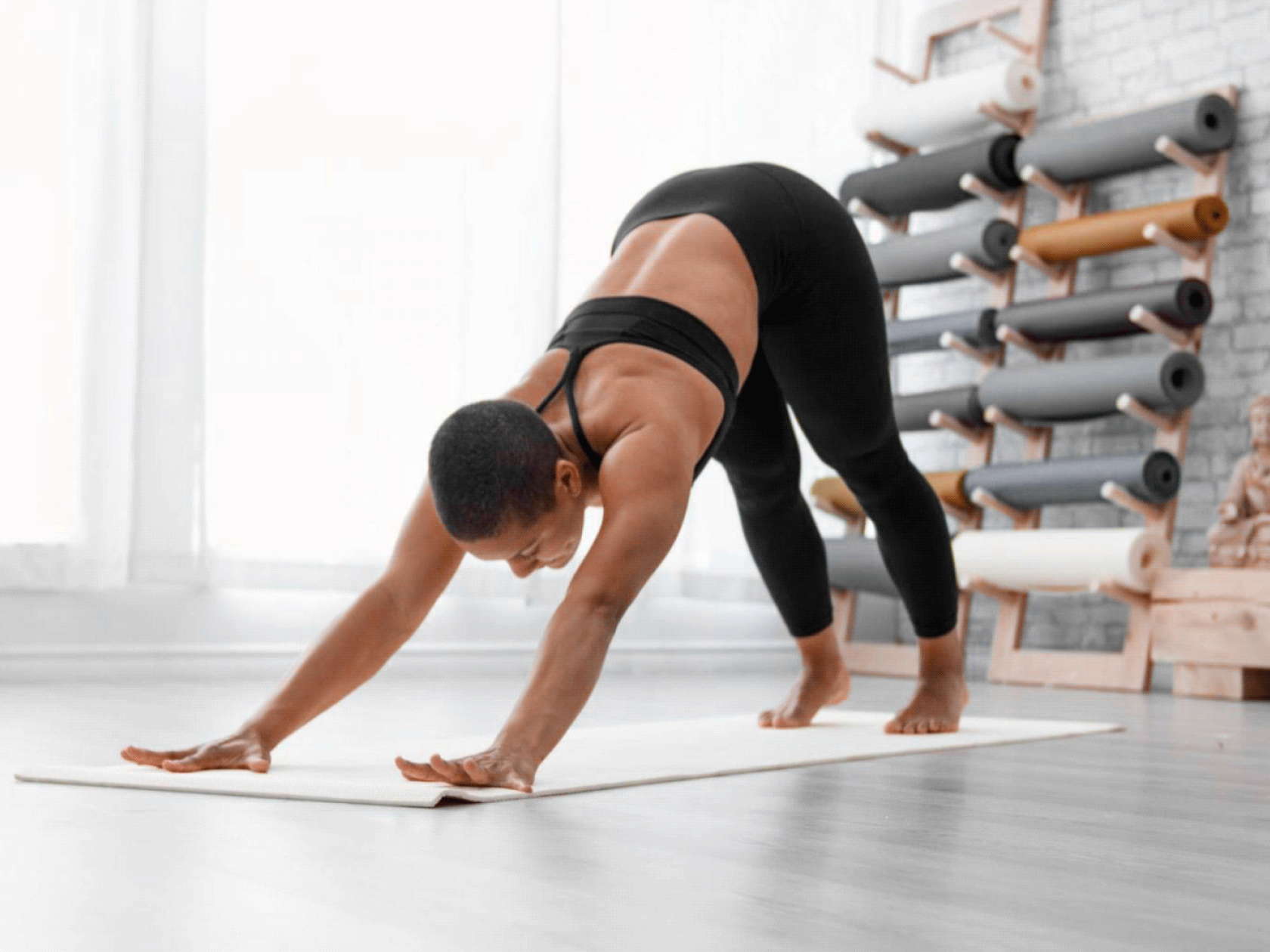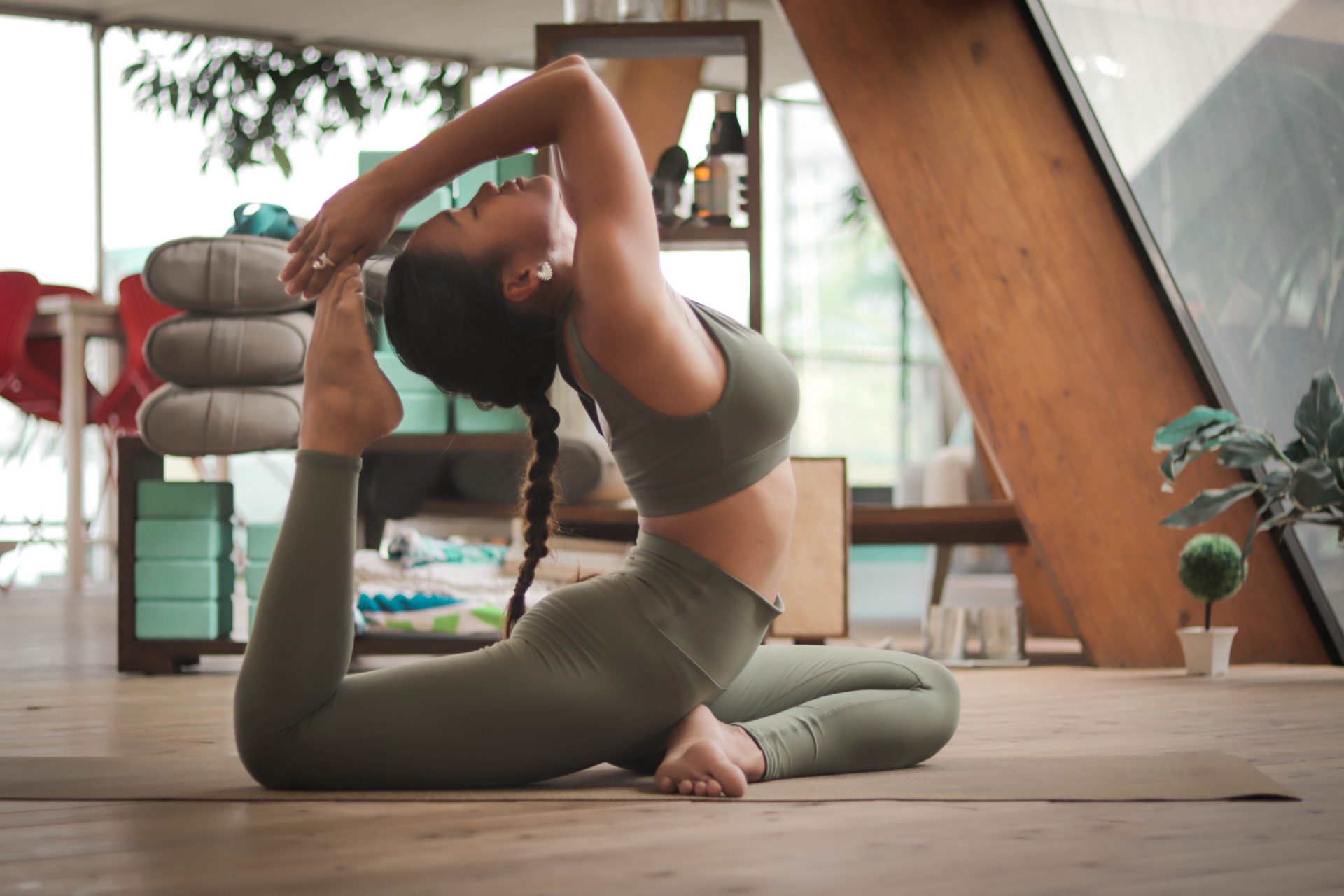Do you think that you’re naturally inflexible? Turns out, some people are genetically more bendy than others. But there are other reasons you might be struggling to stretch too.
Being flexible may look cool, but it’s one of the hardest skills to develop. For some, improving flexibility means being able to comfortably drop into the splits. Others simply want to be able to improve their yoga practice by getting their feet to their head, while for many it’s simply about being able to touch their toes after a lifetime of struggling.
If you’ve been practising for a while, the chances are that you have improved. But sometimes your body reaches a point where it simply does not want to stretch any further. The question is, is it just a plateau you can push through or are you simply not made to bend that way?
You may also like
How to improve flexibility – and why being flexible is about so much more than the splits
How much of flexibility is genetic?
You may have heard some people saying that they can’t get into certain positions because they don’t have flexibility in their genes. It sounds like a good excuse, but according to Rachel Gilman, director of stretch inc and lead stretchologist, it’s actually one of the main reasons some people struggle to improve their flexibility.
“So much of your ability to stretch is about naturally how long your muscles are, how tight your tendons are and how much water you have in the fibrous parts of your body. That’s all genetic. We can improve that to some extent, but your body has natural limitations,” she explains.
Bone structure also plays a part. People with even the most flexible hamstrings won’t be able to get into the splits if their joint doesn’t allow for the ball and socket joint to rotate in that way. Other people won’t be able to do a fully-extend downward dog if their spine is more or less curved, regardless of how loose their shoulders and calves are. “Sometimes, no matter how much your stretch, the joints don’t move that way and the skeleton doesn’t have the space to create those positions,” says Rachel.

Why am I not flexible?
Other than genetics, there are certain things that happen over the course of our life that can impact flexibility. Firstly, it’s to do with ageing. Past the age of 30, we tend to start losing collagen, which can impact tendon, joint and muscle elasticity. “When the fluid and elastic in our muscles and joints starts to break down, our muscles become stiffer and you have to work harder to stretch less.”
But it’s not just about getting older. In fact, your lack of ability to stretch far may date back to when you were growing as a child. “If you had a sudden growth spurt, your bones would have developed very quickly, but your muscles and tendons wouldn’t have had the time to match with them,” says Rachel. It’s why you may have been able to bend over backwards as a child, but lost seemingly all flexibility when you became a teenager.
You may also like
30 day splits challenge review: how flexible will it really make you?
Then there’s the act of sitting down all day. Unfortunately, our body becomes best at what we do most regularly. That means that when we sit at desks for most of our day, the muscles will start to accommodate our posture to suit this. It leads to the hip flexors and chest muscles shortening, which means they will naturally become less flexible. This imbalance is why you may find that you are more flexible in certain positions than in others.
Then there’s the harsh news, which is that some people are simply more flexible than others because they work on it more. As with building strength or learning a new skill, building a more flexible body takes time, and you have to work for it if you want it.

Do I need to be more flexible?
If you need more flexibility in order to improve the quality of your movement and avoid injury then yes, you should be working on it. But the important thing is stretching to your individual end range, rather than competing with other people.
“How much flexibility do you really need in order to move with a functional range of motion?” asks Rachel. “You’re probably not going to learn to do the splits at 65-years-old, but you can reduce your risk of injuries by building more flexibility, alongside strength, to be more mobile.”
Being too flexible can be a bad thing too. “If you’re too flexible everywhere then you won’t be able to stand upright or walk,” Rachel says. “Your body will compensate for some imbalances by tightening up certain muscles. Personally, I have huge range of motion in my quads and hips, but my hamstrings are pretty tight. However, it wouldn’t really be in my best interest to spend loads of time being able to get my legs over my head and create really flexible hamstrings, because then my body wouldn’t be able to support my movement. The body is always looking for an equilibrium.”
And you shouldn’t be building flexibility without building strength. Muscles that can stretch and stretch but don’t have the ability to hold those positions can put you at risk of injury, too.
You may also like
Mobility workout: move better and prevent injury with mobility exercises
It’s about setting goals that are actually useful, rather than intending on being more flexible so you can get into Instagrammable positions. For example, if you find that you aren’t able to perform moves such as an Romanian deadlift properly because your hamstrings are tight, developing flexibility in those muscles is useful (and will also help you to build strength as you will be able to further load the muscles).
“We should be stretching for at least 10-15 minutes every day. That doesn’t mean doing something intense, it just means stretching out your muscles and joints to activate them and encourage blood flow. Stretching should never be painful, either. It should be uncomfortable, as you are pulling the muscles, but don’t do anything that hurts you.”
Follow @StrongWomenUK on Instagram for the latest workouts, delicious recipes and motivation from your favourite fitness experts.
Images: Getty
Source: Read Full Article
